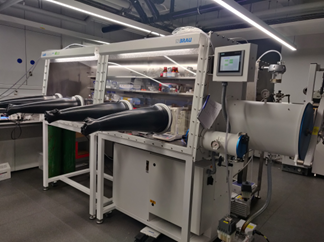Dr Patrick Cullen
MChem, PhD, FHEA
Research Overview
Catalysis, electrochemistry, fuel cells, 2D materials and MOFs, Li-ion, Na-ion batteries, neutron scattering
Interests
Our mission is to pioneer the development of new materials and integrate them into innovative applications and devices. We focus on addressing critical challenges in energy storage, environmental sustainability, and advanced manufacturing.
Our vision is to be a leading hub for groundbreaking materials research and to drive the transition to a more sustainable and technologically advanced future.
Research Themes and Areas of Interest
Core Research Areas: Our lab specializes in the interdisciplinary fields of material science, chemistry, and physics, with a primary focus on designing novel materials and leveraging them for practical applications.
Current Projects
- Operando Neutron Scattering of Electrochemical Devices: Utilizing advanced neutron scattering techniques to understand the in-situ behavior of electrochemical devices, enhancing their performance and durability.
- Nanomaterial Production and Characterisation: Synthesizing new nanomaterials and characterizing their properties for various industrial and technological applications.
- Carbon Dioxide Reduction: Developing innovative materials and methods for efficient CO2 capture and conversion, contributing to the reduction of greenhouse gas emissions.
- Hydrogen Storage Materials: Creating safe and efficient materials for hydrogen storage, a critical component in the shift towards clean energy.
- Suzuki Coupling Electrocatalysis: Enhancing the efficiency of Suzuki coupling reactions through novel electrocatalysts, impacting pharmaceuticals and fine chemicals manufacturing.
- Solid State Electrolytes: Designing high-performance solid electrolytes for safer and more efficient batteries.
- Li and Na-ion Battery Electrodes: Developing advanced electrode materials for lithium and sodium-ion batteries to improve energy density and battery life.
Techniques and Technologies
Our lab is equipped with state-of-the-art facilities to push the boundaries of material science. We have the facilites to manufacture and synthesise materials in air-free environemnts, which is important for many energy technologies including various types of batteries.

In terms of battery testing we have an 80 channel battery cycler and a 32 channel battery cycler that can do more advanced analysis including EIS (Electrochemical Impedance Spectroscopy).
Our group are also regular users of the synchotron at Diamond light source and of neutron scattering at ISIS neutron and muon source, both of which are in Oxfordshire.

